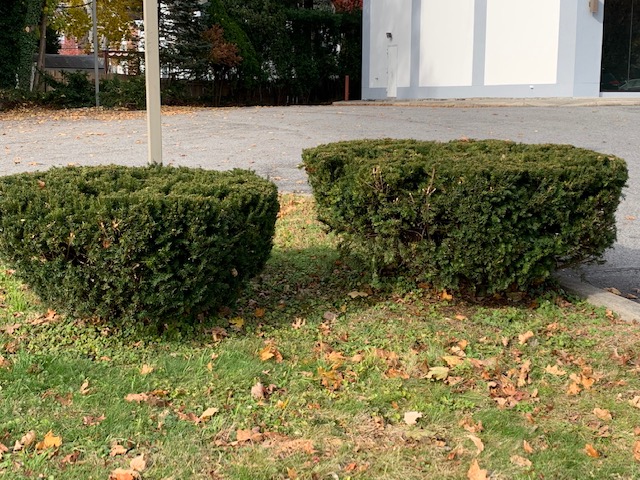
People call these ornamental shrubs. But are they? Ornamental, really?
All around us we see the same limited palette of non-native, often dangerously invasive, and dull landscape choices. In pursuit of the aesthetic of “neat and tidy,” these shrubs are often hacked into unnatural shapes that do little to inspire or attract. Most of these plants offer less than two weeks of landscape interest (looking at you, forsythia and burning bush) and just occupy space the rest of the year.
Two years ago, when we re-designed the foundation plantings around the Manor House at the Nature Center, we included under-used native shrubs that can beautify and diversify typical suburban plantings while providing necessary food and shelter for pollinators and birds. These are plants that look good while doing good.
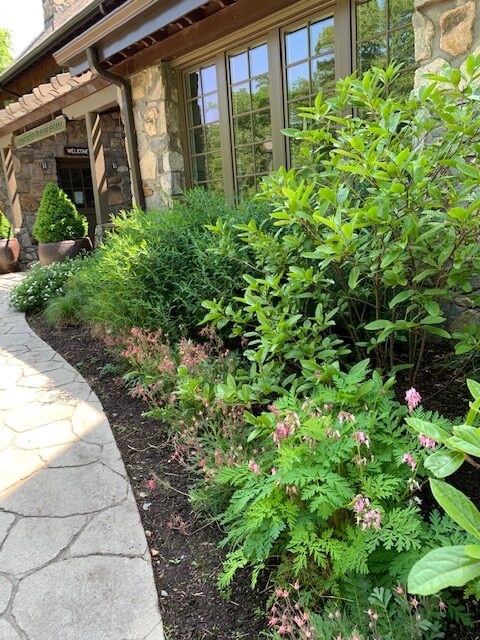
Under windows, or anywhere you need shrubs that stay fairly low, consider Itea virginiana (Virginia sweetspire). Itea blooms with delicate, but showy, white flowers in spring, attracting lots of butterflies. It has lush green leaves on arching stems all summer and rarely needs pruning. In fall, the leaves turn multiple shades of purple and red and hang on until the very end of the season. Itea will tolerate a half-day of shade, but its fall color is best in full sun.

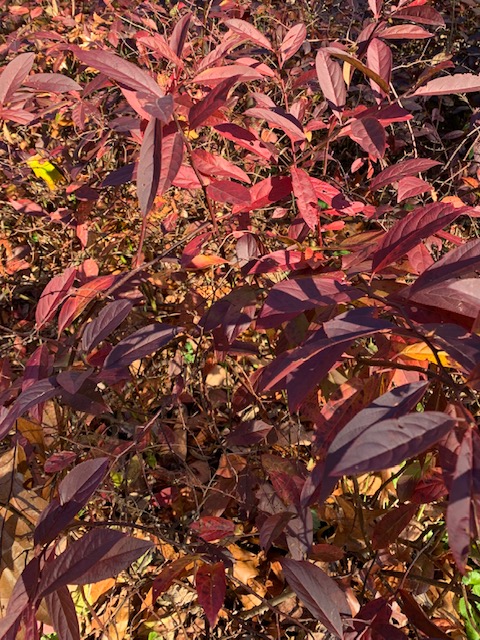
In a spot where you can use more height, try the magnificent native Viburnam nudum, also called Witherod or Possum Haw. This shrub attracts butterflies in spring with big fans of white blossoms. Its leaves are shiny and deep green. Then, in late summer, it produces berries in multiple colors that ripen into raisin-like fruits birds love. And for its last act before winter, the shiny leaves of Witherod Viburnum turn fall colors that put burning bush to shame.
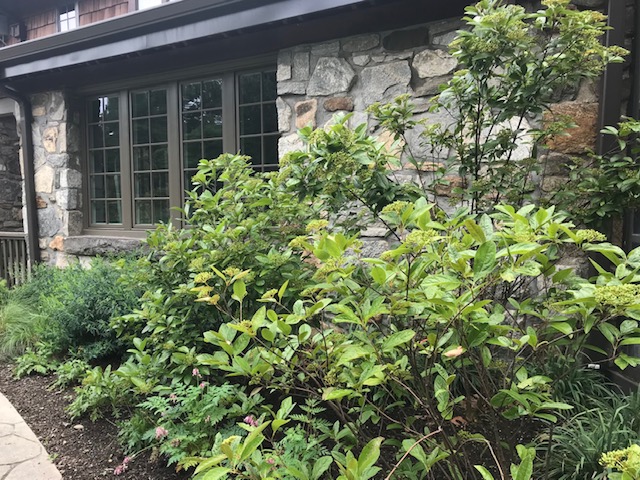

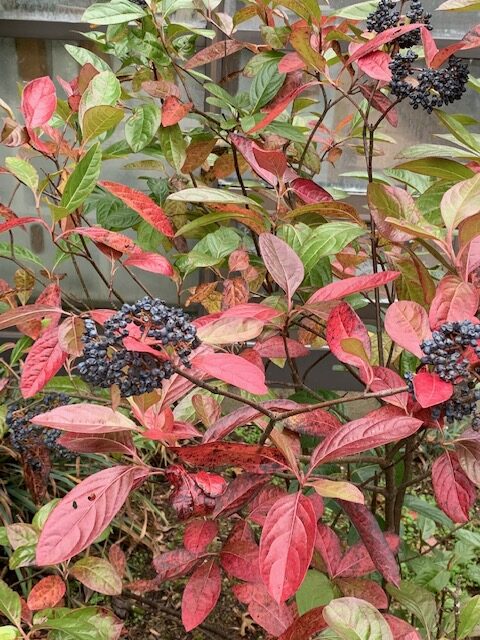
For mid-summer razzle dazzle, you can’t beat Shrubby St. John’s wort (Hypericum prolificum). This shrub is a great foundation plant with a naturally rounded shape and airy grey-green leaves on warm grey stems. Its fall color is mostly yellow, but it holds its leaves until very late in the season. It is one of the first plants to leaf out in the spring, so it looks great all year.
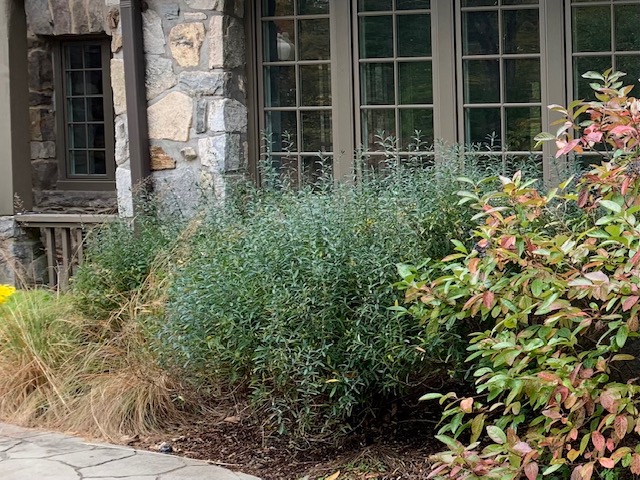
But its real star power shines in mid-to-late summer when it produces loads of bright yellow powder-puff flowers for at least a month. The flowers have no nectar, but are loaded with pollen. Bumblebees nuzzle into the flowers making all of the little stamens tremble and vibrate.

But you don’t have to worry about the bumblebees stinging – they are so obsessed with collecting pollen, they don’t notice you at all. It’s fun to watch them, and you can almost hear the shrub buzz as you walk by.
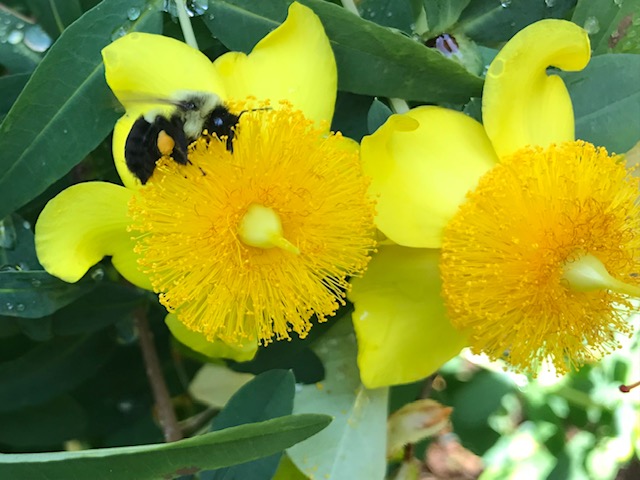
Foundation plantings should be interesting, diverse, and useful to the ecology. If we can have multiple-season interest with native shrubs, why limit ourselves to the same old/same old “ornamental” plants we see too often?
This blog is authored weekly by Cathy Ludden, local expert and advocate for native plants; and Board Member, Greenburgh Nature Center. Follow Cathy on Instagram for more photos and gardening tips @cathyludden.

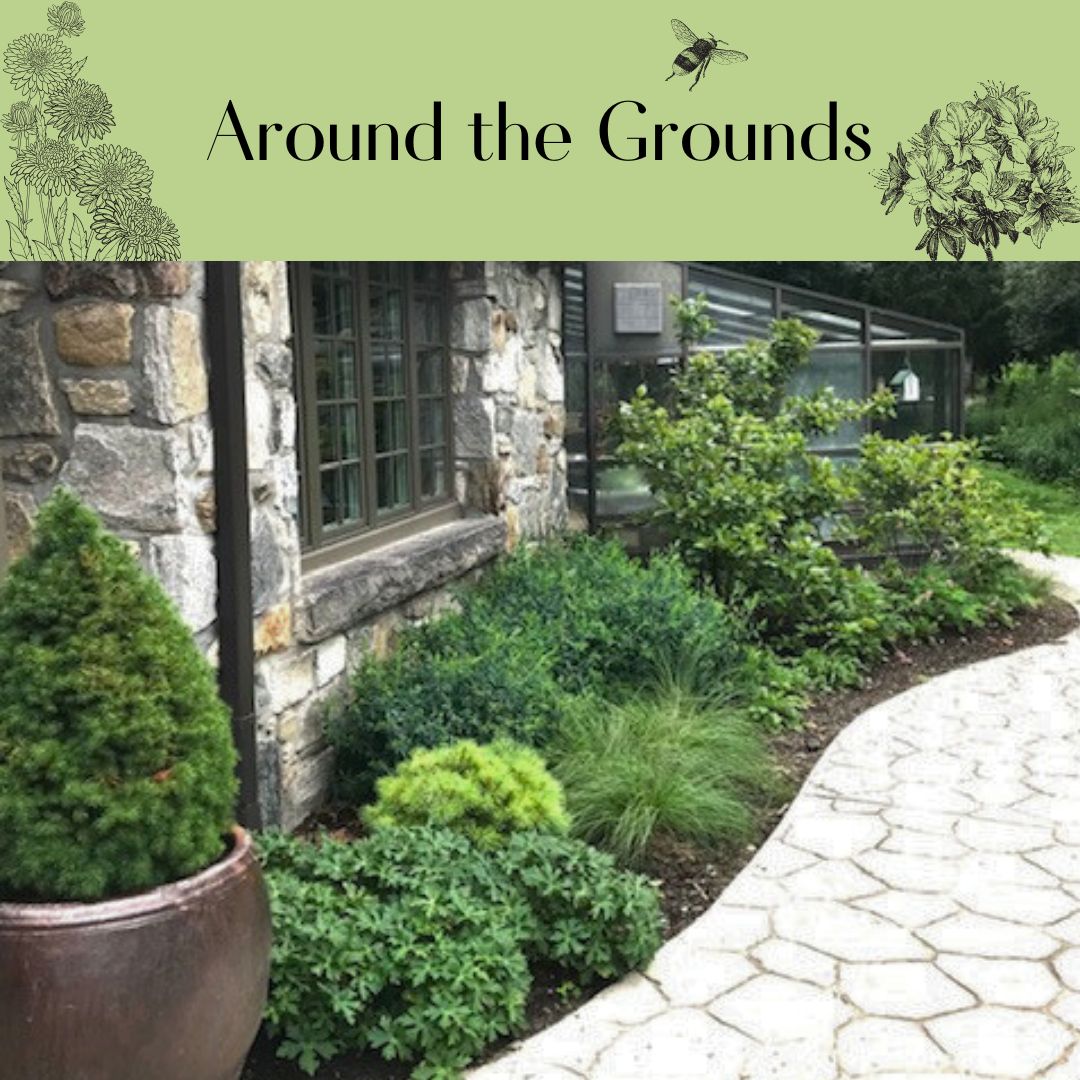
Wow! This is inspiring, especially as I look to plans for next spring.
Oh I love to see a sweet bumble actually getting something useful from plants! The beauty of these native gorgeous plants. Love the itea!
Is the Hypericum prolificum the variety so frequently used in flower arrangements?
Patty, I think it’s Hypericum androsaemum, which produces colorful berry clusters, that is used in flower arrangements. Hypericum prolificum, the shrub native to the Northeast, as well as Hypericum frondosum, native to the mid-Atlantic region, don’t form berries, but rather brown seed capsules. The capsules are attractive on the plant, but I’m not sure how they would do in arrangements. The individual flowers on this shrub only last a day or so, but the plant produces tons of them for weeks in mid-summer. Not great for cut-flowers, but a beautiful landscape plant.